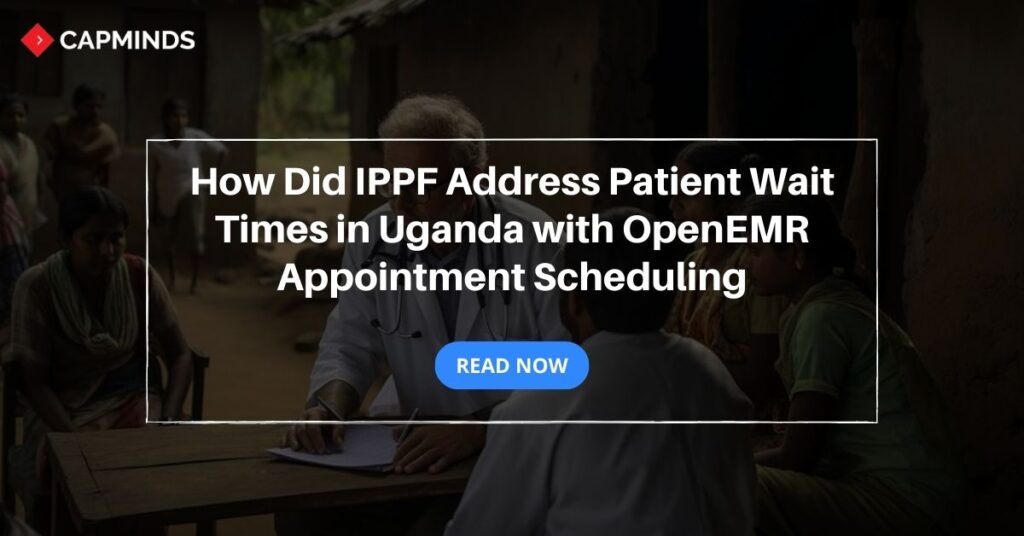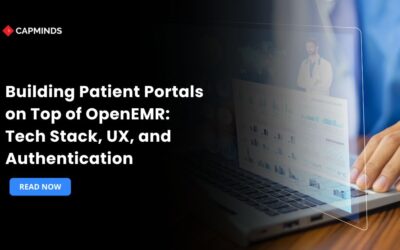How Did IPPF Address Patient Wait Times in Uganda with OpenEMR Appointment Scheduling
IPPF (International Planned Parenthood Federation) has conducted clinics in northern Uganda for sexual and reproductive healthcare.
During the clinical visits, the patient wait times have risen and become a barrier to accessing healthcare. Patients often have to wait around 1 to 1:30 hours to visit the healthcare providers which discourages seeking care.
The IPPF is working to address this issue by implementing the OpenEMR’s Appointment scheduling. After efficiently implementing the OpenEMR appointment scheduling, the long wait times of the patients have significantly decreased.
This blog post will guide you on How IPPF implements OpenEMR Appointment Scheduling to reduce the long wait times of patients by an average of 30 minutes.
Challenges and Solutions of IPPF in Implementing the OpenEMR Appointment Scheduling
While implementing the OpenEMR Appointment Scheduling, IPPF (International Planned Parenthood Federation) has significantly faced many challenges. Here are a few challenges faced by the IPPF:
Related: The Ultimate Mission of IPPF and The Role of OpenEMR
Poor Remote Area
The Major challenge faced by the IPPF while implementing the OpenEMR appointment scheduling in Uganda’s health campaign is the poor remote area. Remote rural areas with limited internet connection and technological development. Many patients did not have computers or smartphones to book appointments. IPPF has addressed this issue and has come up with a solution.
Solution: By addressing this issue, IPPF allows patients to call local clinics to book appointments online. The IPPF staff will collect the necessary information from the patient such as date, name of the patient, health condition, and appointment timing. Using the OpenEMR Appointment scheduling, the IPPF staff book appointments for the patients.
Lack of Patient Education
Another hurdle faced by the IPPF while implementing the OpenEMR Appointment scheduling is the lack of patients’ knowledge of using technology. OpenEMR requires patients to proactively schedule appointments through the online patient portal platform.
However many Ugandans were familiar with the walk-in visits to the clinics instead of phone call appointments. Educating people on how to use the OpenEMR technology to schedule healthcare providers’ appointments took time and resources.
Solution: IPPF addressed this issue and conducted local rural campaigns to educate the patients about the technology on How to use the patient portal to schedule healthcare provider visits. To make it more convenient for the patients, IPPF allows patients to call the local clinic Healthline number to schedule appointments.
Disruption of the Existing Workflow
Transitioning from traditional workflow to OpenEMR appointment scheduling also disrupted the IPPF workflow. The IPPF healthcare staff have to learn about the new system, and technology and how to coordinate to schedule appointments through portals.
Solution: IPPF planned to conduct an efficient and comprehensive training session for the healthcare staff to experience and use the full potential of the OpenEMR appointment scheduling.
Benefits of Implementing the OpenEMR Appointment Scheduling in IPPF
By successfully implementing the OpenEMR appointment scheduling system in the Uganda Healthcare Campaign, the IPPF has benefited in so many ways by making the workflow seamless and providing a better experience for patients.
Here are a few ways How IPPF benefits from successfully implementing the OpenEMR Appointment Scheduling:
Reduce Wait Time for Patients
Before implementing the OpenEMR appointment scheduling, the patients must wait an hour or two to visit the healthcare providers for consulting.
After implementing the OpenEMR Appointment scheduling, the IPPF has reduced the wait time of the patients from an hour to 30 Minutes. Which significantly improved the patient’s experience while visiting the healthcare providers.
Reduces the No-shows
Usually after booking appointments, the patients may not show up during the appointment. After implementing the OpenEMR appointment scheduling, the IPPF has significantly decreased the no-show of the patients. The IPPF healthcare staff will send real-time alerts like SMS, notifications, or calls to remind the patients of appointments.
Better Patient Care
By reducing the wait time for the patients and streamlining the appointment scheduling process, the healthcare providers of the IPPF have focused more on better patient care.
In conclusion, IPPF has benefited in many ways by implementing the OpenEMR Appointment Scheduling. Especially while conducting local clinics and health camps in the rural area of Uganda. Though challenges are many during the process of Implementation, IPPF has tackled smartly and successfully implemented the OpenEMR Appointment scheduling system.
Whether it’s a local clinic medical camp or a large-scale healthcare organization, adopting OpenEMR technology is crucial for streamlining the administrative workflow and promoting better patient care.
Ready to leverage the OpenEMR technology in your healthcare practice? Connect with CapMinds and Let us provide better patient care.




